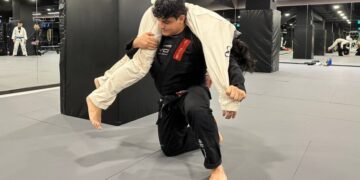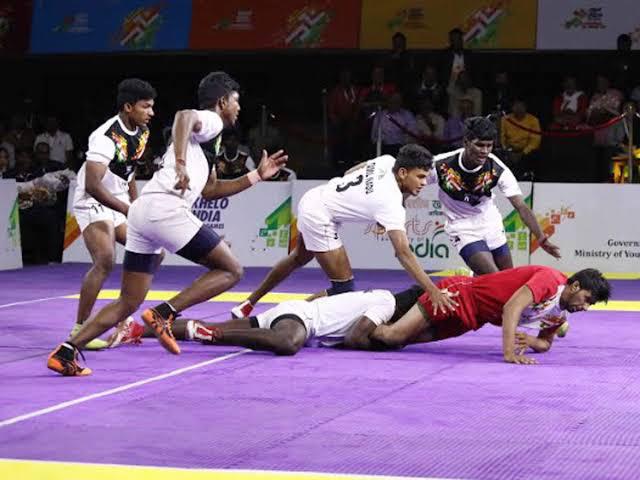
There’s a very particular sound in a BJJ gym when someone gets promoted. It’s a mix of clapping hands, whoops from teammates, and that unmistakable smack of a belt being whipped across your back in celebration. You’ve just been handed your blue belt, and for a moment, it’s pure pride.
But after the photos are taken and the congratulatory pats fade, reality sets in. The truth is, this next stage of your BJJ journey feels different. Sometimes, uncomfortably different.
The Strange Phenomenon Of The Blue Belt Blues
You’d think getting promoted would make people more motivated than ever, but the opposite often happens. A surprising number of practitioners vanish within a year of hitting blue belt. It’s so common there’s even a name for it: the “blue belt blues.”
Why? A few reasons tend to pop up again and again:
- The Honeymoon’s Over: The first year or two of BJJ feel like constant breakthroughs. By blue belt, progress slows, and the plateaus get longer.
- No More Free Passes: At white belt, everyone forgives sloppy escapes or missed sweeps. At blue belt, people expect you to “know better,” which can feel like extra pressure.
- Life Gets In The Way: Promotions take years to earn. By the time you get there, work schedules, injuries, or family priorities might crowd out training time.
- The False Finish Line: Some people subconsciously treat blue belt as the end goal, and once they get there, they stop showing up.
And then there’s the mental part nobody really talks about.
The Insecurities Nobody Warned You About
A lot of new blue belts quietly carry the same thoughts:
- “I’m Not Good Enough For This Belt.” You roll with tough white belts, and they still catch you. Higher belts handle you with ease. The nagging feeling that your coach made a mistake can eat away at you.
- “Now I Have To Win.” The moment you tie on that blue belt, you feel like losing to a white belt will “look bad.” Suddenly, rolling feels more like performance evaluations than training.
- “People Are Gunning For Me.” And honestly… some are. Competitive white belts see you as their next challenge. They’ll push the pace, and you’ll feel it.
- “Why Do I Feel Stuck?” At white belt, any improvement feels huge. At blue belt, you start noticing the gaps in your game more than your progress.
It’s normal. In fact, it’s a sign you’re in the thick of real learning.
Shifting From Survival Mode To Building Your Game
White belt is about staying afloat, learning basic defenses, avoiding submissions, and figuring out how to breathe under pressure. Blue belt is different. It’s time to start building.
Think of your game like a house. At white belt, you poured the concrete foundation. Now, you’re framing the walls, adding rooms, deciding where the kitchen goes. That means:
- Deepening your go-to moves rather than collecting random techniques.
- Chaining attacks together so one failed attempt flows into the next.
- Testing your game against different body types and styles, not just your “safe” training partners.
Losing The Need To “Always Win”
Here’s the thing: the fastest way to stall out at blue belt is to protect your ego at all costs. If you only roll safe, only attack when you’re sure it’ll work, or avoid higher belts to dodge losses, you’re capping your own growth.
Use this stage to experiment. Try techniques you’re bad at. Start from bad positions. Even let your training partners work submissions on you just so you can sharpen your escapes.
The more you focus on learning instead of just “winning” in the gym, the faster you’ll develop the skill set of a purple belt.
Guarding Against The Drop-Off
It’s almost sneaky how it happens. You start skipping a class here, a week there. Before long, you’ve lost your momentum entirely. The simplest safeguard? Keep the same schedule (or more) that got you to blue.
Also, and this might sound counterintuitive, sign up for something. A tournament, a seminar, even a team trip to another gym. Having events on the calendar forces you to keep showing up.
Find New Fuel For The Fire
The belt around your waist is just cloth. What matters is what you do with it. Some ideas to keep you hungry:
- Specialize in one guard or passing style and become known for it.
- Take on a mentorship role with newer students. Explaining the basics will sharpen yours.
- Challenge yourself with No-Gi if you’ve been mostly Gi (or vice versa).
- Track your rolls in a notebook or app so you can actually see your progress over months.
The Long Game Mentality
The jump from white to blue is just the first big step. Purple, brown, and black are still far ahead. It’s not a race, it’s a long apprenticeship.
You’ll have months where you feel unstoppable and months where you wonder why you even bother. Both are part of the deal. The key is simple: don’t quit.
Every black belt you’ve ever seen on the mats? They were once a blue belt who kept showing up on the days they didn’t feel like it.
Conclusion
You didn’t get promoted because you’re perfect. You got promoted because your coach sees your potential. The belt is a reminder of where you’re headed, not where you’ve finished.
So tie it on, keep your head down, and keep rolling. The best part of your BJJ journey is still ahead.
You may also like:
7 Must Know BJJ Techniques For Any Self-Defense Situation
If you’ve competed in Brazilian Jiu-Jitsu, you know the rules: matches start standing. But in most gyms around the world, it’s a different story. To save time, space, and prevent unnecessary setbacks, many rolls start…
Brazilian Jiu-Jitsu, or BJJ for short, has earned a reputation as one of the most practical martial arts for real-life self-defense. Learning the basics of BJJ gives you the tools to stay calm and in…
Step into any serious grappling conversation and you’ll soon hear the name Helena Crevar. At just 18 years old, she’s already shaking up the world of Brazilian Jiu-Jitsu and now stepping into ONE Championship’s grappling…
If you have ever walked past a martial arts gym anywhere, you may have noticed groups of people in uniforms grappling on padded mats. What you are seeing is likely Brazilian Jiu-Jitsu, also known as…
Walk into a Muay Thai or Brazilian Jiu-Jitsu gym and you’ll find more than just fighters and fitness enthusiasts. You’ll find CEOs, actors, podcasters, founders, and high performers who’ve made martial arts a cornerstone of…
In Brazilian Jiu-Jitsu, some techniques are flashy and explosive. Others are quiet, almost unassuming, but absolutely brutal when done right. The arm drag falls into the second category. At first glance, it doesn’t look like…
Finding the right after-school activity for your child is more important than ever in a fast-paced city like Singapore. With growing academic demands and screen time at an all-time high, more parents are looking for…
Fitness in Singapore has evolved beyond traditional gym routines and long-distance running. Today, many people are exploring newer, more engaging forms of exercise that combine fun, variety, and long-term health benefits. Whether your goal is…
At first glance, kickboxing and Muay Thai might look like twins in the striking family, with fast punches, powerful kicks, and fighters in gloves exchanging blows. But once you dig a little deeper, you’ll notice…
When most people in Singapore think of Muay Thai, they picture fast-paced strikes, clinches, and heavy kicks taught in modern martial arts gyms or featured in global events like ONE Championship. But behind the explosive…
In a fast-paced city like Singapore, where convenience often takes priority, sticking to a healthy weight loss plan can be challenging. With tempting food options at every corner, from hawker stalls to 24-hour eateries, it…
If you’re stepping into your first boxing class, one of the most exciting parts is learning combinations. Boxing, at its core, is about rhythm, timing, and control. While it may look like just throwing punches, there…






































